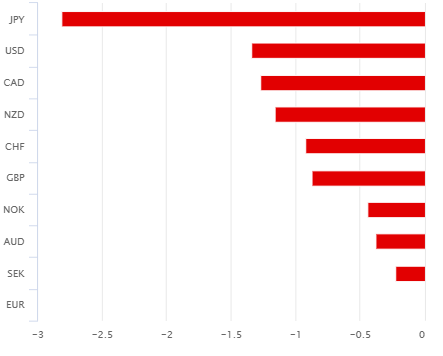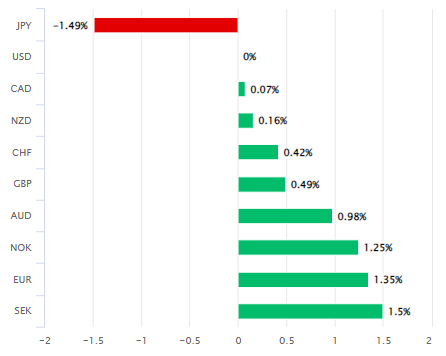EUR/USD Rate Testing Supports On Charts as European Inflation Data Eyed
- Written by: James Skinner
“We are not in the domain of forward guidance but we are very strongly rooted in our determination to break the back of inflation and to take inflation back to 2% in the medium term on a sustainable basis,” - President Christine Lagarde.

Commerzbank HQ looms over the Frankfurt skyline. Image © Andre Douque, reproduced under CC licensing conditions
The Euro to Dollar exchange rate entered the final session of the week testing a key support level underpinning its June rally on the charts while potentially risking losses toward 1.0900 or below if inflation figures go the right way for the European Central Bank (ECB) in some of the continent’s largest economies.
Europe's single currency was close to the bottom of the G20 bucket for the week by Friday after falling below 1.10 against the Dollar when stronger-than-expected economic growth numbers from the U.S. added to losses inspired by monetary policy commentary from the European Central Bank on Thursday.
Earlier losses built amid mixed interpretations from analysts of a change in the wording of the ECB’s policy statement on Thursday, as well as some confusion in relation to what remarks from the press conference might imply about the interest rate outlook after the bank raised borrowing costs for a ninth time.
But President Christine Lagarde said three times in the press conference on Thursday that Governing Council members are resolved to “break the back” of inflation whatever the weather and that means Friday’s release of German inflation figures for July is likely to be an important event for the Euro.
“Inflation figures for Germany, France and Spain should signal a continued decline in the euro inflation rate in July,” says Dr Jorg Kramer, chief economist at Commerzbank.
Above: Euro to Dollar rate shown at daily intervals with Fibonacci retracements of June rally and selected moving averages indicating possible areas of technical support.
“In Germany, the inflation rate is likely to resume its downward trend in July, which was interrupted by a base effect in June. We expect inflation to fall from 6.4% to 6.1% and inflation excluding energy and food from 5.8% to 5.4%,” he adds.
The economist consensus suggests German inflation slowed from 0.3% to 0.2% taking the annual rate down to 6.2% on Friday but some forecasters see a larger decline as likely while the average forecast suggests French inflation likely came in at zero in July.
Implied measures of market expectations suggest only a modest possibility of any further increase in Euro Area interest rates during the months ahead so it’s possible that losses for the Euro would be limited if inflation falls notably, though this is far from assured.
"I hope it is very clear that we are not in the domain of forward guidance but we are very strongly rooted in our determination to break the back of inflation and to take inflation back to 2% in the medium term on a sustainable basis,” President Christine Lagarde said in Thursday's press conference.
“And to do that, we will be informed by data, we will analyse the data and we will then decide at that point in time,” she added.
Thursday and Friday losses reversed the small rally seen after the Federal Reserve (Fed) raised the Fed Funds rate to 5.5% but gave a less downbeat assessment of the economic outlook on Wednesday and kept its options open for September’s interest rate decision.
Above: Euro (left) and Dollar (right) relative to G10 currencies this week.
“We're going to look at two additional job reports, two additional CPI reports, lots of activity data and that's what we're going to look at and we're going to make that decision then,” Chairman Jerome Powell told a press conference.
“That decision could mean another hike in September or it could mean that we decide to maintain at that level and again the question we're going to be asking ourselves is if the overall signal is that we need to do more,” he added.
Euro-Dollar’s decline has extended from 1.1250 since last Thursday to reverse around half of the rally seen since the early days of June and coinciding with a run of positive U.S. economic figures and a rally in the EUR/CNH exchange rate, which itself played out amid a sell-off in in the Chinese Renminbi.
“USD/CNH stalling gives the euro some support in the face of headwinds it faces from market positioning (long), recent European data (weak) and fading expectations of further ECB rate hikes beyond September,” writes Kit Juckes, chief FX strategist at Societe Generale, in Thursday market commentary.
“Where USD/CNH goes next may decide whether EUR/USD spends August below 1.10 or re-testing 1.13,” he adds.
Above: Euro to Dollar rate shown at daily intervals with EUR/CNH, Renminbi-Dollar rate and spread or gap between 02-year German and U.S. government bond yields. Click for closer inspection.








